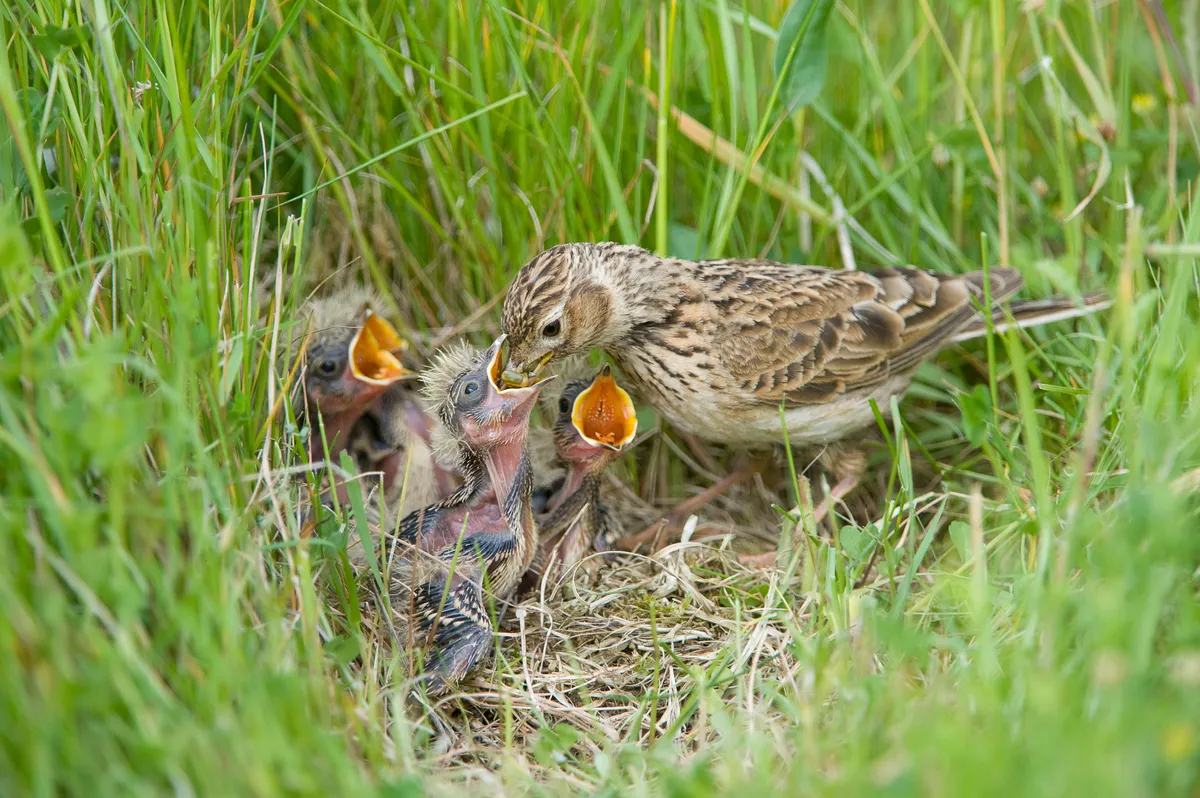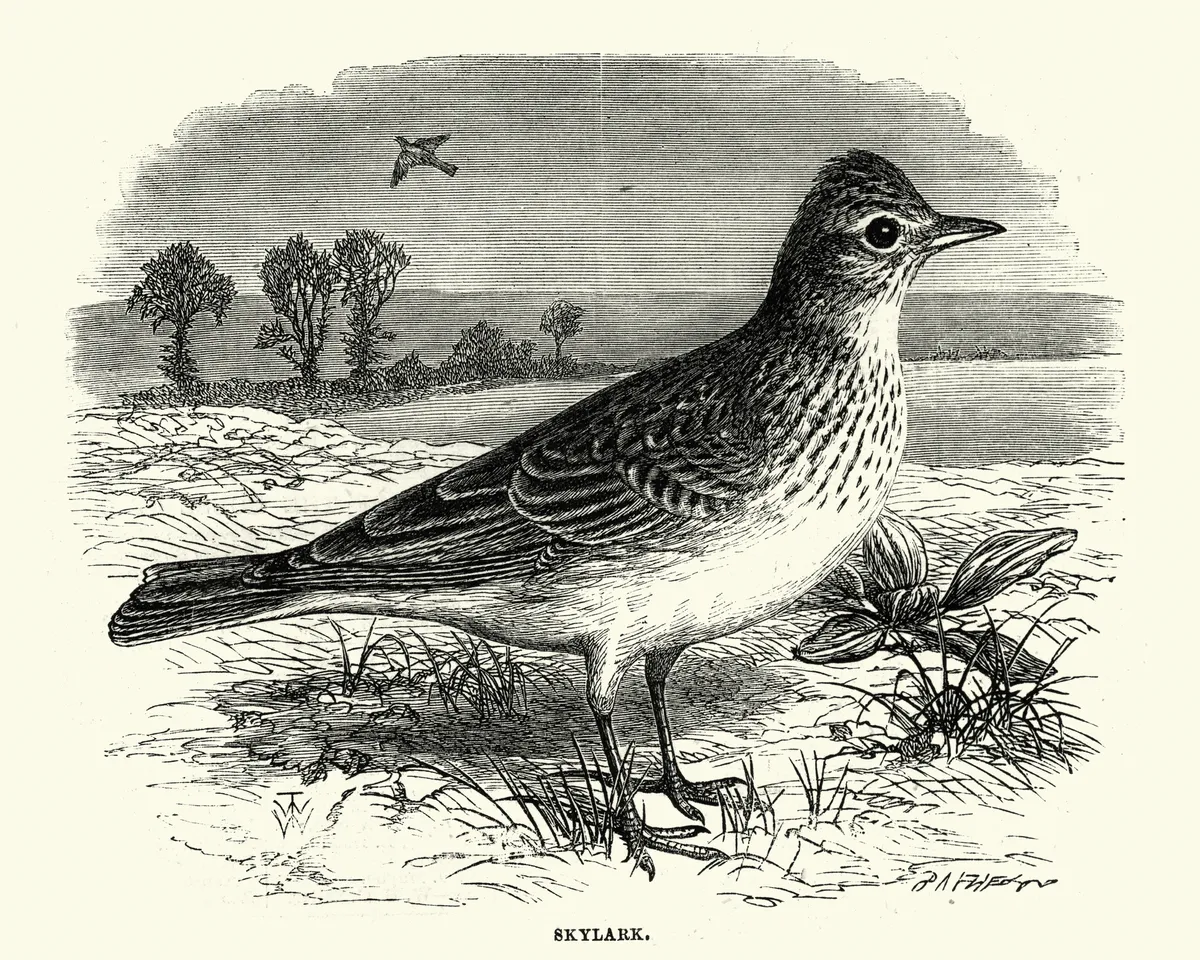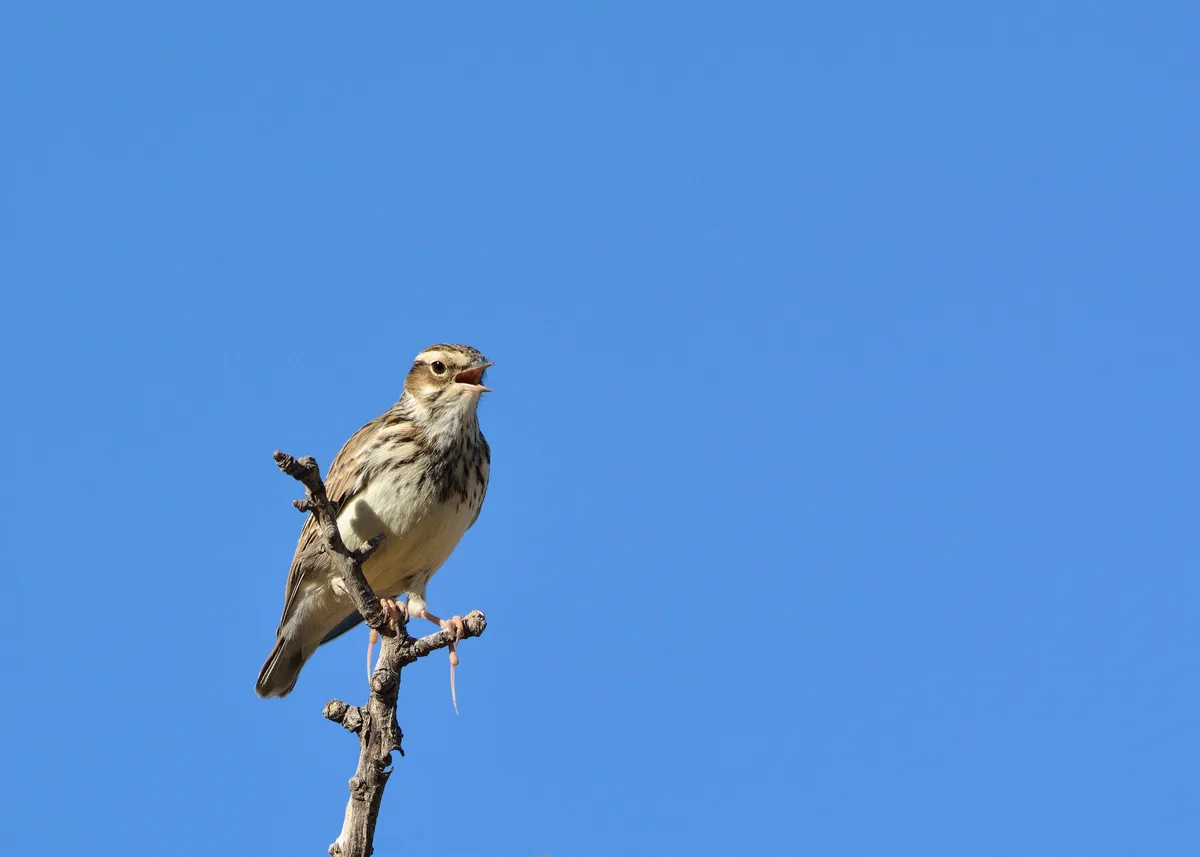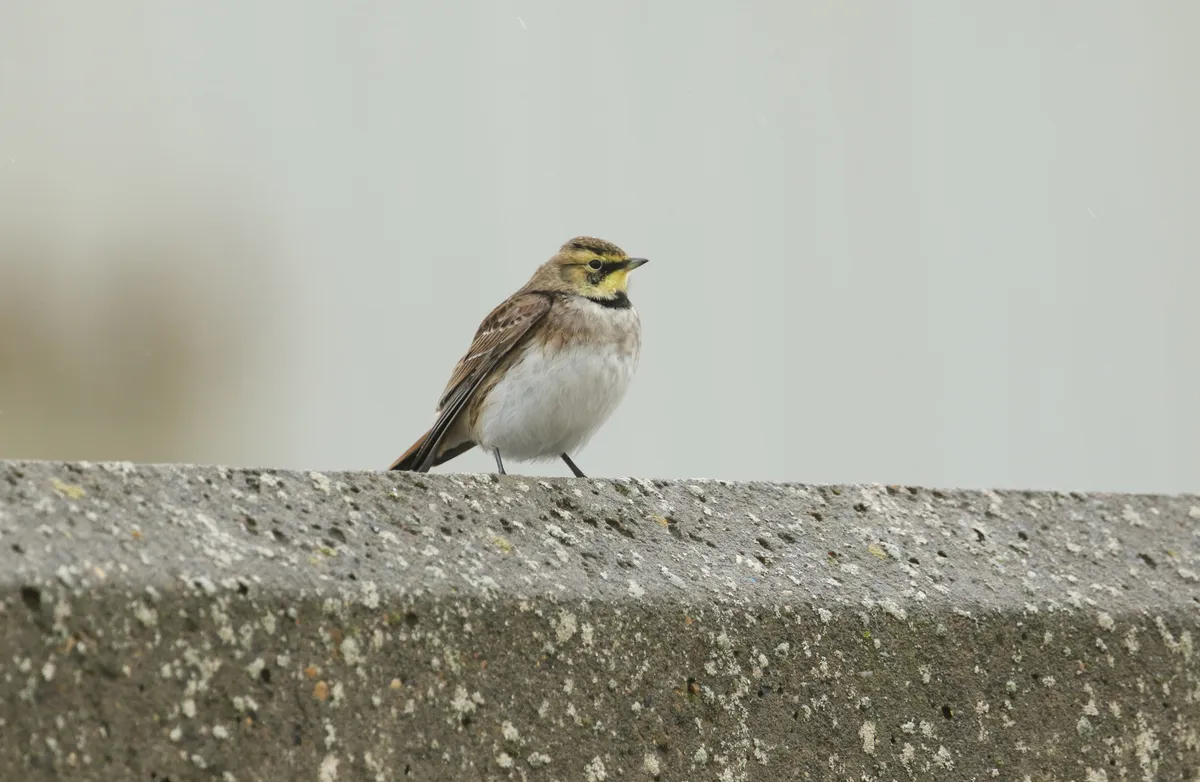Skylark song is one of the most evocative sounds of open farmland, moorland and coastal grasslands. From late February to early summer, the unending rising and falling liquid warbling song, delivered from the sky as the male ascends on fluttering wings, is a magnificently uplifting sound that has inspired musicians, poets and writers for centuries.
Skylarks (Alauda arvensis) were once extremely common birds found pretty much anywhere there was open ground. But intensive arable faming methods have made it difficult for this ground-nesting bird to survive and since the Second World War it has vanished from vast swathes of the countryside. They are also very easily disturbed by dogs off leads and it is vitally important to keep dogs under control in skylark habitat between March and July.
Learn more about skylarks in our expert guide, including how to identify, their song and other key facts about the species. Find out more about Britain's songsters, including goldfinch, blackbird and blackcap.
We also have bird species guides to warblers, tits and robins, plus we have rounded up our favourite bird identification books.
What does a skylark look like?
The skylark is a small, brown and buff coloured bird streaked and speckled with markings and with a small crest. It would be largely overlooked but for its voice.
Where do skylarks live?
Skylarks are birds of open landscapes with big skies and few trees. Considered a farmland bird, skylarks traditionally nest among crops, hay meadows and even livestock pasture. They are also found in good numbers on coastal grasslands and saltmarsh and they thrive on heather moorlands.
Discover great locations to see and hear skylarks
What do skylarks eat?
Feeding entirely on the ground, skylarks eat seeds, plant matter and any small invertebrates they encounter. Therefore, they are badly affected by any pesticides or herbicides in use.
Where do skylarks nest?

The nest is a hollow on the ground usually sheltered by vegetation, especially grass. The female lays 3-4 eggs and incubates the eggs without the male's help. The eggs hatch after just 11 days and the young are mobile enough to leave the nest nine days later. This is a defensive strategy – being mobile can make it difficult for predators such as snakes, weasels, crows and rats to target the nest. However, it will be 20 days from hatching before the young birds fledge.
In a good year, a pair of skylarks may raise 2-3 broods.
Why do skylarks sing?

Like most songbirds, skylarks sing to defend a territory and to announce to potential mates that they are fit and healthy. It is thought that the longer and more varied the male skylark's song, the greater chance he has of impressing a mate. A male begins his song flight by soaring up from the ground and rapidly gaining height, before pouring out un unbroken musical stream of song. He will hover from song time, a black spot in the sky before plunging to the ground and straightening out in low-level flight. The entire performance is spectacular.
Find out more about Britain's best songbirds
Skylarks in culture

If you're walking in skylark territory in spring, it's hard not to stop and just admire the incredible song raining down on you. You're not alone – the trills, whistles, warbles and fizzing sounds have captured the imagination of writers, musicians and poets for centuries.
Perhaps the most famous – and routinely voted Britain's favourite piece of classical music – is The Lark Ascending by Ralph Vaughan-Williams, which was first performed in 1920. It begins with a violin that cleverly captures the bird singing as it ascends into the sky. Vaughan-Williams was inspired by George Meredith's 1887 poem The Lark Ascending.
The opening lines of Meredith's poem sum up the wonder of the song:
He rises and begins to round,
He drops the silver chain of sound
Of many links without a break,
In chirrup, whistle, slur and shake,
All intervolv’d and spreading wide,
Like water-dimples down a tide
Where ripple ripple overcurls
And eddy into eddy whirls;
A press of hurried notes that run
So fleet they scarce are more than one,
Yet changingly the trills repeat
And linger ringing while they fleet
Poets such as Edward Thomas, Gerald Manley Hopkins, William Wordsworth all written in praise and awe of the skylark and to Percy Shelley the little bird was the "Blithe spirit". Even Chaucer, writing in the 14th century, acknowledged "The bisy larke, messager of day" in The Knight's Tale – which might have given rise to the expression "Up with the lark!". Shakespeare, writing 200 years later exclaims (in Cymbeline): "Hark! Hark the lark at Heaven’s gate sings".
Why are skylarks declining?
Since the 1960s, Britain's skylarks have declined by over 60%. This is largely due to changing farming practices – specifically the rise in autumn sown crops instead of spring sown. Autumn sown crops replace the fallow stubble fields of old that provided important winter feeding grounds. And in spring, the crops are already too tall to provide ideal nesting grounds for the skylark. Spring sown crops offer just the right level of growth and protection from predators.
The RSPB has been experimenting with creating skylark plots in autumn sown crops – essentially these are bare areas around half the size of a tennis court – that offer ideal nesting sites whatever the surrounding crop and this has increased skylark productivity by up to 50%. Many farmers are now including skylark plots within their cropping regimes.
As ground-nesting birds, skylarks are very vulnerable to predation from birds, mammals and even snakes in some areas – and are even driven from their nests by dogs off leads.
Meet Britain's other lark species
There are two other species of lark that you might encounter in the British countryside.
Woodlark

The woodlark (Lullula arborea) is a bird of heathlands. It too has a beautiful song, an decending scale of fluted notes delivered from tall trees.
Hear the woodlark's song in our Plodcast
Shorelark

The shorelark (Eremophila alpestris) is a scarce winter visitor, turning up in small numbers on the east coast of the UK. It has a distinctive black and yellow face and bib – and appears to have little black horns.
What is 'skylarking'?
The playful element of the skylark's songflight might have given rise to the term 'skylarking', which means 'frivolous or playful behaviour/joke-making'.

